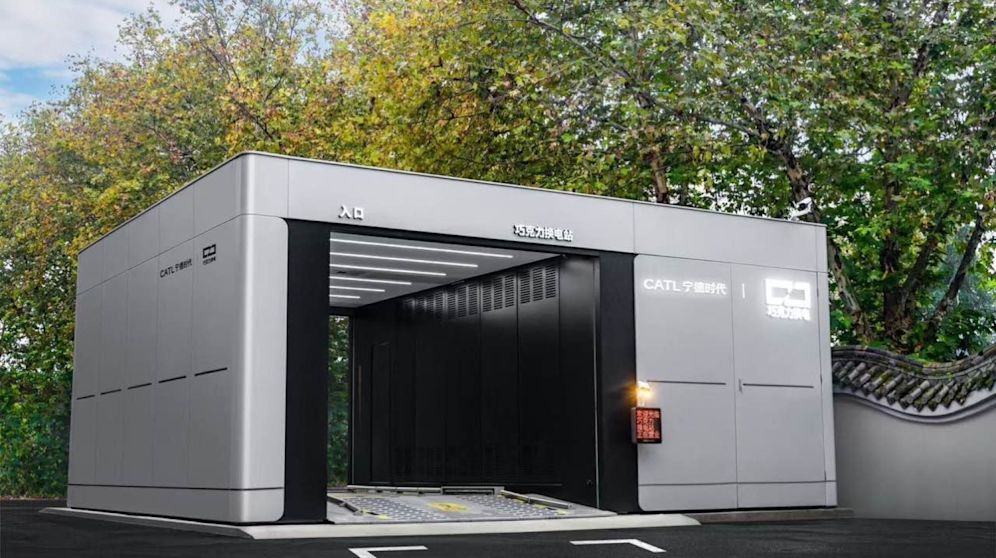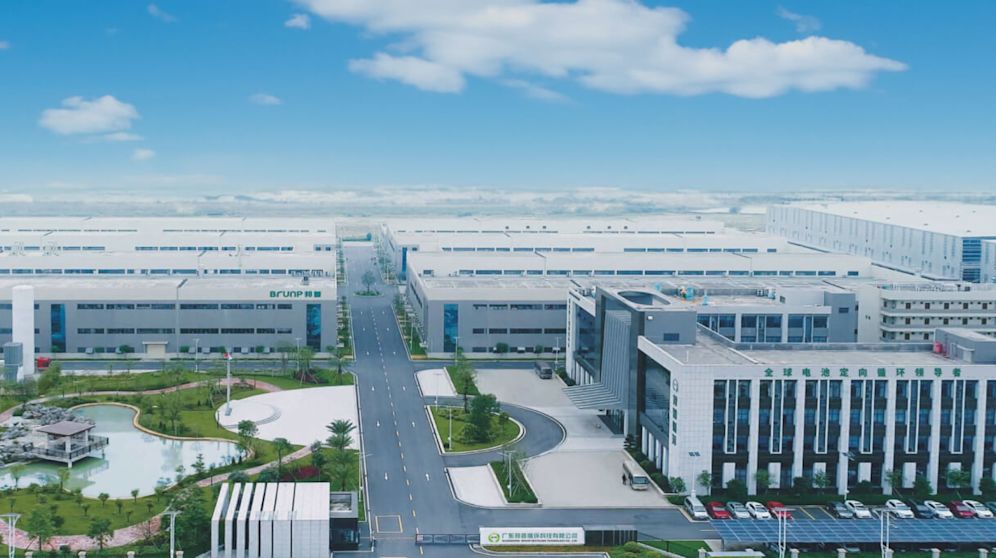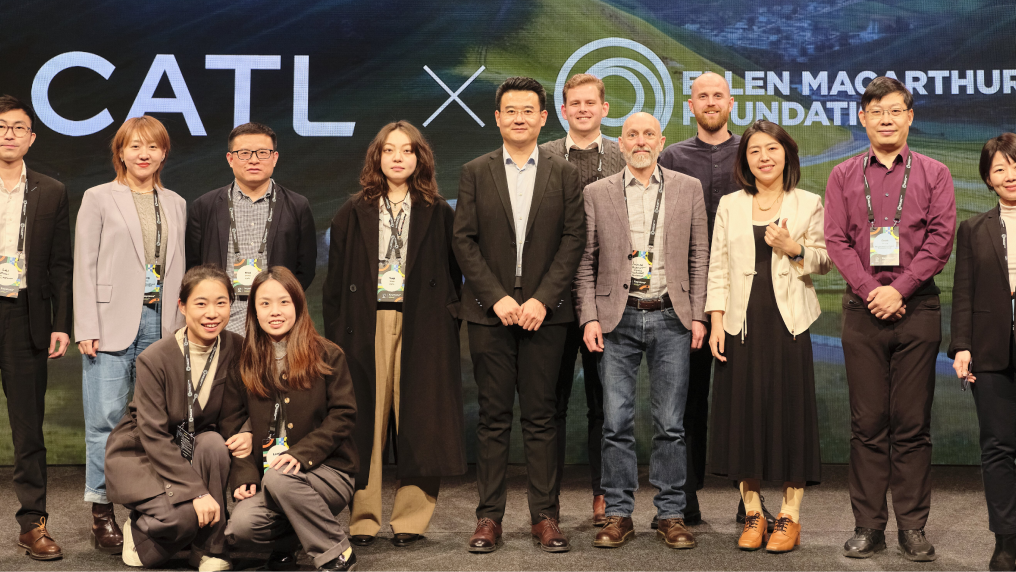
The transition to an electric-powered economy presents a major challenge: increasing the supply of critical minerals quickly enough to meet the fast-growing demand for electric vehicles (EVs) and renewable energyrenewable energyEnergy derived from resources that are not depleted on timescales relevant to the economy, i.e. not geological timescales. storage. To support a projected 60-fold growth in the global EV fleet by 2050, demand for minerals like lithium, copper, cobalt, and nickel is expected to increase 5-20 times according to different scenarios.
CATL, the world's largest battery manufacturer, alongside its subsidiary Brunp Recycling (Brunp), is pioneering a circular approach to battery and battery material management that transforms this challenge into an opportunity.
Company background
Contemporary Amperex Technology Co., Limited, known as ‘CATL’, is a global leader in battery manufacturing committed to increasing the proportion of recycled materials in its batteries. Founded in 2011, the company sells batteries to major automotive manufacturers, including BMW, Tesla, Toyota, and Volkswagen. Headquartered in Ningde, Fujian province, CATL operates 11 plants across China and one in Europe and employs over 100,000 workers globally, including nearly 20,000 R&D engineers.
CATL has invested heavily in expanding recycling processing capacity throughout China, and in 2015 it acquired Brunp, the world’s largest battery recycling company. Brunp produces cathode precursor materials using multiple feedstock sources, including a growing proportion of critical minerals recovered from used EV batteries. The majority of Brunp’s output feeds directly back into CATL's battery manufacturing processes.


Together, CATL and Brunp are building a circular battery value chain that, if scaled across the industry, could create new forms of value while reducing exposure to supply disruptions and the risks of material price volatility.
As a leader in battery production, CATL recognises the need to apply circular economycircular economyA systems solution framework that tackles global challenges like climate change, biodiversity loss, waste, and pollution. It is based on three principles, driven by design: eliminate waste and pollution, circulate products and materials (at their highest value), and regenerate nature. principles across its activities to reduce supply chain emissions and environmental impact. CATL’s commitment to circularity has been formalised through its Strategic Partnership with the Ellen MacArthur Foundation, making it the first renewable technology leader in the Foundation's Network.
From design to recycling: building circularity across the whole battery lifecycle
CATL is implementing multiple complementary circular strategies in its production to increase use of materials and the efficiency of recycling:
Designing batteries with long life and easy disassembly
Monitoring and optimising performance throughout use to maximise service life
Promoting battery swapping which can optimise charging and maintenance regime, extending the useful life of batteries
Implementing ‘cascade utilisation’ by repurposing batteries for less intensive applications
Recycling to recover valuable materials for reincorporation into new battery production
These circular strategies can be examined at product and material level:
1. Product level
Extending life-span and maximising value through reuse and innovative service models.
When batteries no longer meet the demanding performance requirements of EVs, many can still provide years of productive service in less intensive applications. Through reusereuseThe repeated use of a product or component for its intended purpose without significant modification. applications and circular business models like rental, buy-back, and upgrade services, CATL ensures batteries remain in productive use for significantly longer periods.
Reuse applications
When batteries are no longer suitable for EVs but maintain functional capacity, CATL assesses their remaining health and redirects them to less demanding applications. Referred to as ‘cascade utilisation’, this can extend battery useful life by 5-10 years beyond its original automotive lifespan, through deployment in stationary energy storage systems, backup power systems, grid stabilisation applications, and logistics vehicles with lower performance requirements. Cascade utilisation maximises the value gained from the original manufacturing investment and embedded resources.
Circular business models
CATL has diversified its battery offerings to embrace circular business models that transform how citizens can access EV technology. Given that batteries represent 30-40% of an EV’s total cost, CATL's Rent or Buy Back models could help address the cost barrier to EV adoption, making EVs more accessible to a much broader demographic while also ensuring batteries return to CATL for proper circular management at end of life. Chinese car manufacturer Nio, which uses CATL batteries, reports that 70% of its customers choose ‘battery-as-a-service’, reducing the barrier to entry by at least 70,000 Yuan (USD 9,870).
CATL’s Swap or Upgrade service-oriented models offer an alternative to charging, giving flexibility to customers while facilitating material circularity. The upgrade option is particularly valuable, allowing customers to benefit from rapid advances in battery technology while retaining components and materials in the remainder of the vehicle, potentially reducing overall material and resource consumption. These models allow CATL to retain relationships with customers throughout the battery lifecycle while ensuring battery materials are kept in controlled loops.
2. Material level
Scaling up the quantity and quality of material recovery and recycling.
When batteries reach the end of their useful life, many of the metals and materials contained within can be recovered, processed, and refined into high-quality materials for new battery production. To recover these valuable minerals, CATL relies on the infrastructure and processes provided by Brunp, which has recycling facilities strategically distributed around China.
“We recycle batteries not only because it’s environmentally responsible, but because it creates long-term economic value and supports the development of a resilient, circular global supply chain.”
Dr. Robin Zeng, Founder and Chairman of CATL
Speaking at the One World Summit, Hong Kong, May 2024The three-stage recycling process
Brunp's operational process involves three critical stages to recover key minerals that can be used in new batteries.
Physical Disassembly: Batteries are safely dismantled to separate key components.
Hydrometallurgy: Chemical processes extract valuable metals from battery components.
Precursor Synthesis: Recovered materials are processed into cathode precursors that can be blended with virgin minerals to create high-quality cathode materials for new batteries.
Brunp three stage recycling system
Flexible feedstock approach
Brunp relies on four potential types of feedstock to produce its battery precursor materials: virgin minerals mainly from the Global South, production scrap from CATL factories, used EV batteries, and black mass (used batteries that have undergone primary processing).
While the company currently relies on virgin minerals for the majority of its battery material production, its infrastructure enables it to dynamically adjust the volume of incoming feedstock from used EV batteries as supply increases. Within 10 years, Brunp aims for its predominant feedstock to be recovered materials, moving CATL towards a decoupling of battery production from virgin minerals.

The coming wave of end-of-life EVs: challenges and opportunities
The CATL-Brunp circular battery system aims to be economically competitive while playing a crucial role in enabling sustainable growth of electrified transportation and energy systems.
Looking ahead, CATL has committed to ambitious circularity goals including establishing comprehensive collection and recycling systems in major markets, progressively integrating higher percentages of recycled content in new batteries, and building ecosystems of cross-industrial partners to scale battery circularity globally.
"This is not just about environmental responsibility — it's about driving innovation and building a system that benefits industries and communities worldwide."
Sandy Song
CATL's Global Lead for Circular EconomyThe coming years will see substantial increases in end-of-life batteries as the first major wave of EVs reach retirement age. This presents both a challenge and opportunity — the infrastructure and technology developed by CATL and Brunp will be tested at unprecedented scale and will require successful management to demonstrate the viability of circular approaches for the entire industry.





